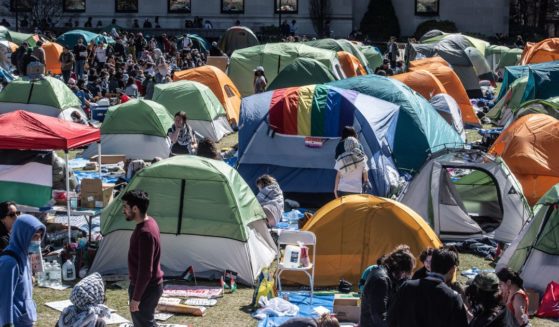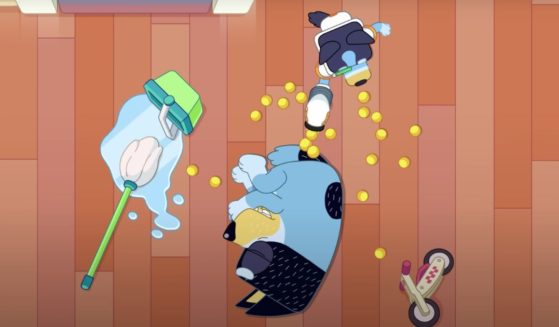The Big One: Spooky Pause After California's Quake Swarm Has Geologists Sounding the Warning Bell
There were plenty of viral videos from last week’s earthquakes in California. However, geologists believe they could be indicative of something much larger — something that’s long been known as the “Big One.”
The “Big One” is the name colloquially used for a major earthquake along one of California’s three major geological faults. It’s usually used in conjunction with the San Andreas Fault, but the Hayward Fault and the San Jacinto Fault are also possibilities.
On Thursday, a 6.4-magnitude earthquake hit the region; according to The Weather Channel. A second quake, this one a 7.1 magnitude, struck 11 miles north-northeast of Ridgecrest, California.
The earthquakes were relatively far away from the San Andreas Fault and neither was the “Big One.” As Australia’s News.com points out, California is long overdue for a major quake, and the results could be devastating.
Strong 6.9 shallow #earthquake Ridgecrest, California / 0.5 mi deep! pic.twitter.com/e5HlE4Q296
— Carlos Ramirez (@LpdlcRamirez) July 6, 2019
And, scientists are sounding the warning bell for those who think the 7.1 quake and the silence since then means the series of quakes is over. This could just be a pause.
“[These quakes do] not make [the Big One] less likely,” California seismologist Lucy Jones told the Los Angeles Times last week. “There is about a one in 20 chance that this location will be having an even bigger earthquake in the next few days, that we have not yet seen the biggest earthquake of the sequence.”
The United States Geological Survey has also predicted more earthquakes to come in the area, some which might be bigger than the 7.1.
Like any quake, today’s M7.1 has a 1 in 20 of being followed by something even bigger. Smaller quakes – M5s are likely and a M6 is quite possible.
— Dr. Lucy Jones (@DrLucyJones) July 6, 2019
The Golden State hasn’t seen a seismic event like this since 1999. The last “Big One” dates back to the 1906 San Francisco earthquake. And that has scientists worried.
“We’re unusually quiet,” Glenn Biasi, who co-authored a study called “The Current Unlikely Earthquake Hiatus,” said back in April, according to LiveScience.
“The biggest faults and the faults carrying most of the slip have not ponied up.”
The USGS has said that the odds were that six “Big Ones” would have struck California in the past century. Instead, there have been none.
“We do not think it’s happened in the previous thousand years,” Biasi said.
So, what’s the reason?
News.com Jamie Seidel explored several theories, including the idea that geological tension was relieved because of a number of earthquakes back in the 1800s, but that remains a matter of speculation.
From my mom @mom2five1 in Ridgecrest California @ABC7 pic.twitter.com/iZSxoJsSXU
— JD (@jedent) July 6, 2019
Could there be another outlet for geological tension besides just earthquakes, however?
Some think so. The state has eight volcanoes; seven of those sit above active fields of magma.
“The potential for damaging earthquakes, landslides, floods, tsunamis, and wildfires is widely recognized in California,” a 2019 report by the USGS says.
“The same cannot be said for volcanic eruptions, even though they occur in the state about as frequently as the largest earthquakes on the San Andreas Fault.”
There’s about a 16 percent chance of a major eruption in the next 30 years, with 200,000 California residents viewed to be at risk.
Now, if you’ve been on social media these past few days, you’ve probably seen plenty of talk about the quakes foreshadowing an eruption at the “supervolcano” below Yellowstone National Park, given the erratic behavior of the geysers there.
Forbes’ science writer Eric Mack forcefully dismissed those predicting a Yellowstone eruption.
“The connection that I see in the online reaction to the earthquakes is between two interesting psychological effects: Apophenia, which is the human tendency to link unrelated things, and the Duning-Kruger effect that finds people who know the least about something often seem confident that they know better than everyone else,” he wrote in a Saturday piece.
“Case in point: The folks online connecting a freaky series of earthquakes to the other freaky bit of geology they read about in their social feeds a few months back — ‘You know Yellowstone is going to blow and kill us all any day now, right?’
“But the truth is the world and its geology are much more complicated and even the experts don’t fully understand it all.”
What they do understand, however, is that unless a major shift has happened in the geological patterns along the three faults in California, the “Big One” is overdue — and it could take a grievous toll on a city like Los Angeles or San Francisco.
Truth and Accuracy
We are committed to truth and accuracy in all of our journalism. Read our editorial standards.












